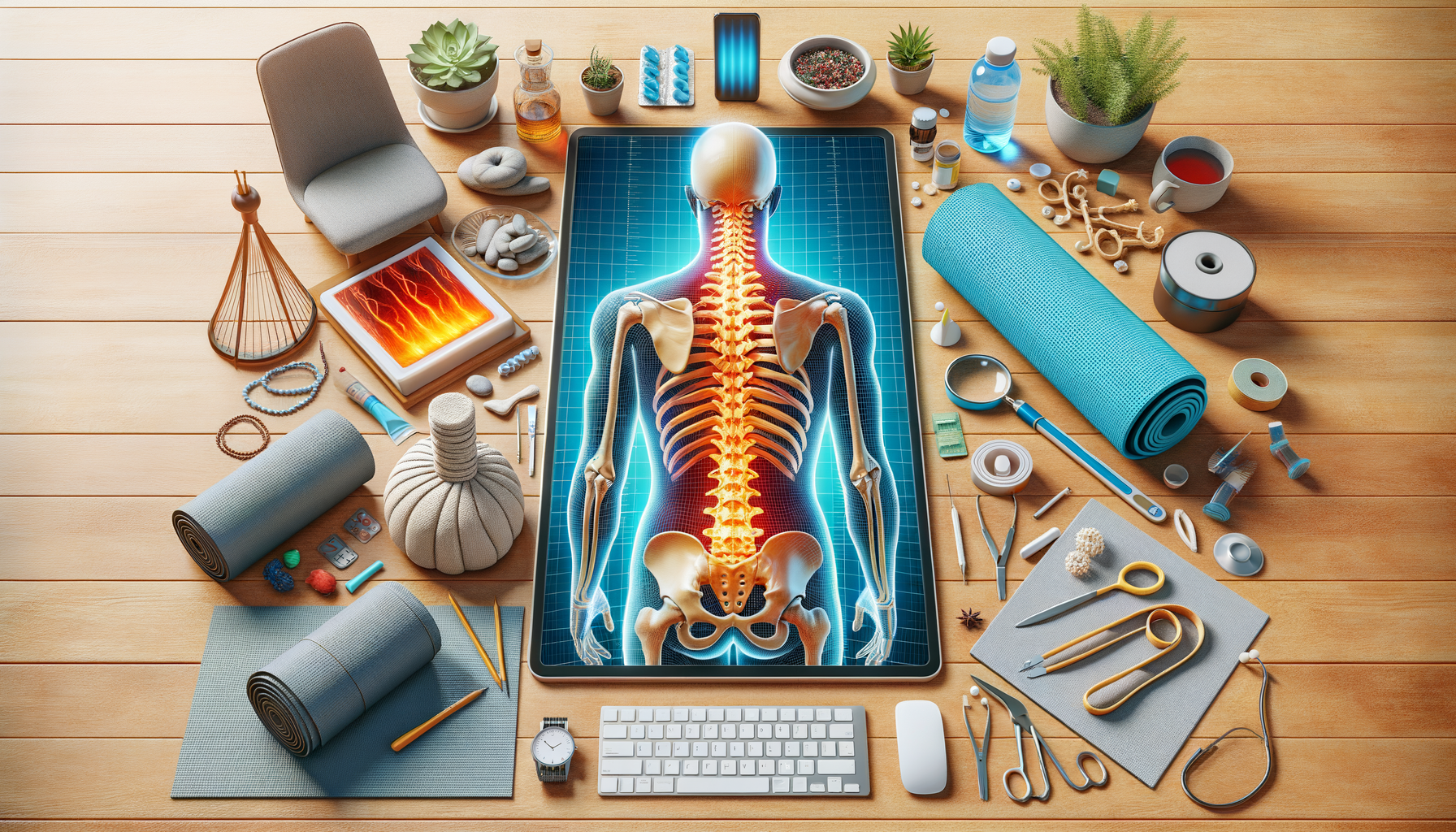Understanding the Causes of Back Pain
Back pain, a common ailment affecting millions, can arise from various causes. Understanding these causes is crucial in managing and alleviating the discomfort associated with it. Common causes include poor posture, which often results from prolonged sitting or improper alignment while working at a desk. This can lead to muscle strain and tension in the back. Additionally, heavy lifting without proper technique can contribute to back injuries, as it places undue stress on the spine.
Another significant cause is degenerative disc disease, a condition where the discs in the spine lose their cushioning ability over time. This can lead to chronic pain and discomfort. Furthermore, lifestyle factors such as obesity and lack of exercise can exacerbate back pain, as excess weight increases the load on the spine, and a sedentary lifestyle weakens the muscles supporting the back.
Understanding these causes can help individuals take preventive measures, such as maintaining good posture, incorporating regular exercise into their routine, and using proper techniques when lifting heavy objects. By addressing the root causes, one can significantly reduce the frequency and intensity of back pain episodes.
Exercise and Physical Therapy
Exercise and physical therapy are among the most effective methods for alleviating back pain. Regular physical activity strengthens the muscles that support the spine, improving posture and reducing the likelihood of future injuries. Low-impact exercises such as walking, swimming, and cycling are particularly beneficial as they provide cardiovascular benefits without putting excessive strain on the back.
Physical therapy, guided by a professional, can tailor exercises to target specific areas of pain and weakness. Therapists often recommend core-strengthening exercises, as a strong core provides stability to the spine. Techniques such as stretching and flexibility exercises help to maintain a healthy range of motion, preventing stiffness and tension.
In addition to exercises, physical therapists may use modalities such as heat therapy, ultrasound, and electrical stimulation to reduce pain and inflammation. By combining these approaches, individuals can experience significant relief from back pain and improve their overall quality of life.
The Role of Ergonomics
Ergonomics plays a vital role in preventing and managing back pain, especially for those who spend long hours at a desk or workstation. Ergonomic principles focus on designing workspaces that promote good posture and reduce strain on the body. This includes adjusting the height of chairs and desks to ensure that the spine is aligned and the feet are flat on the floor.
Using ergonomic chairs with proper lumbar support can significantly reduce the risk of developing back pain. These chairs encourage a natural curve in the spine, minimizing pressure on the lower back. Additionally, positioning computer monitors at eye level can prevent neck and upper back strain, which often contributes to discomfort.
Implementing ergonomic practices not only helps in alleviating existing back pain but also serves as a preventive measure. By creating a comfortable and supportive work environment, individuals can maintain better posture and reduce the risk of future back problems.
Mind-Body Techniques
Mind-body techniques such as yoga, meditation, and tai chi have gained recognition for their effectiveness in managing back pain. These practices focus on the connection between the mind and body, promoting relaxation and reducing stress, which can exacerbate pain.
Yoga, in particular, combines physical postures with breathing exercises, enhancing flexibility and strength while calming the mind. Regular practice of yoga has been shown to reduce chronic back pain and improve overall well-being. Meditation and mindfulness techniques help individuals focus on the present moment, reducing anxiety and tension that often accompany pain.
Tai chi, a gentle form of martial arts, emphasizes slow, controlled movements and deep breathing. It improves balance and coordination, which can prevent falls and related injuries. By incorporating mind-body techniques into their routine, individuals can experience a holistic approach to managing back pain, addressing both physical and psychological aspects.
Medical Interventions and When to Seek Help
While many cases of back pain can be managed with lifestyle changes and non-invasive methods, there are instances where medical intervention is necessary. Persistent or severe pain that interferes with daily activities may require professional evaluation. Doctors may recommend imaging tests such as X-rays or MRIs to diagnose underlying conditions.
Medical treatments for back pain include medications such as nonsteroidal anti-inflammatory drugs (NSAIDs) to reduce inflammation and pain. In some cases, muscle relaxants or corticosteroid injections may be prescribed to alleviate severe discomfort. For chronic pain, procedures like nerve blocks or spinal cord stimulation might be considered.
It is crucial to seek medical advice if back pain is accompanied by symptoms such as numbness, weakness, or loss of bladder control, as these could indicate serious conditions requiring immediate attention. Consulting a healthcare professional ensures a comprehensive approach to managing back pain, combining medical treatments with lifestyle adjustments for optimal results.
Conclusion: Taking Control of Back Pain
Back pain, though common, does not have to be an inevitable part of life. By understanding its causes and implementing proven methods such as exercise, ergonomic adjustments, mind-body techniques, and seeking medical advice when necessary, individuals can effectively manage and alleviate back pain. Taking proactive steps to address back pain not only improves physical health but also enhances overall quality of life, allowing individuals to engage fully in their daily activities without discomfort.








